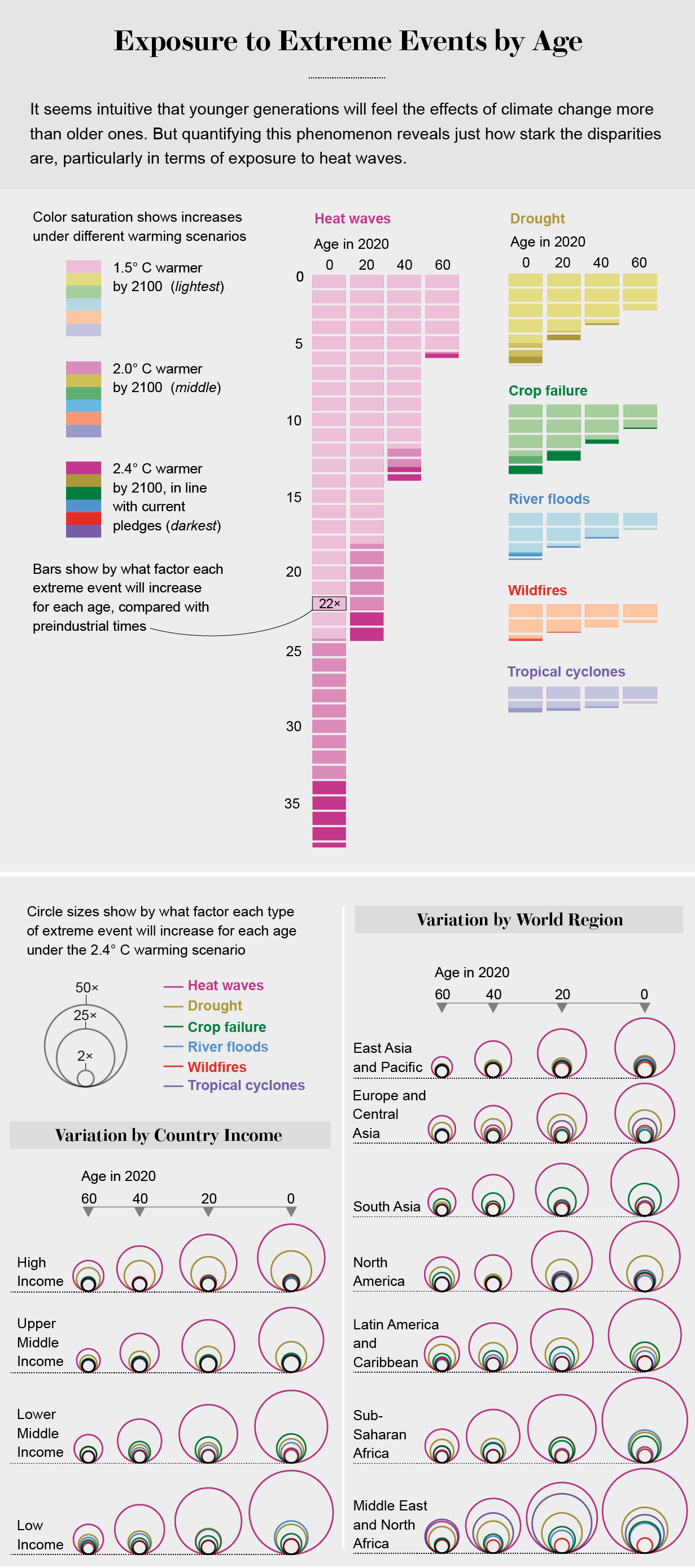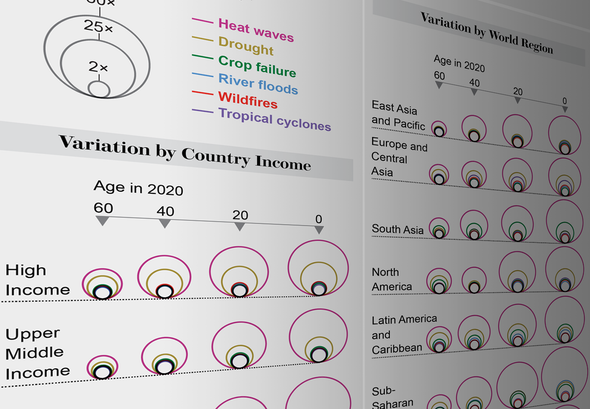Babies born today will experience far more disruptions fueled by climate change than their parents or grandparents. In a study published in October 2021 Science, Wim Thiery of Vrije Universiteit Brussel in Belgium and his colleagues combined climate model projections under three global warming scenarios with demography data to calculate the lifetime exposure to six types of extreme weather for every generation born between 1960 and 2020. Even as a climate scientist acutely aware of the dangers of rising temperatures, “seeing the numbers as a person, as a parent, is a punch in the stomach,” he says. Young people in the Middle East and sub-Saharan Africa and those in low-income countries will see the largest increases in exposure. These estimates examine only changes in the frequency of extreme events—they do not represent how those events may become more intense and longer-lived. Although “young generations have the most to lose if global warming reaches higher levels,” Thiery says, they also have the most to gain if greenhouse gas emissions can be reined in. “That is a key message of hope.”



